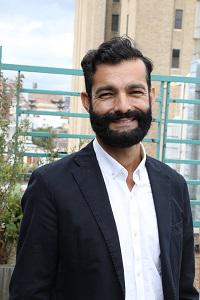Catching Up with New York's Aging Population
Each day, 10,000 Americans turn 65 years old. Mirroring national demographics, New York City’s senior population is growing larger, living longer, and getting poorer. Several factors, including a lack of affordable housing and rising costs of necessities like health care, are causing older adults to age into poverty and oftentimes homelessness.
Homelessness is traumatic, and it has lasting, devastating impacts on individuals and families who experience it. Thus, it is no surprise that homelessness has been shown to accelerate age-related issues. Researchers have found that homeless older adults over 50 had a higher prevalence of geriatric conditions than middle-aged adults who were housed — some 20 years younger. The study shows that participants who were homeless had as much or more trouble bathing, dressing and eating, using transportation, taking medications, managing money, applying for benefits, arranging a job interview and finding a lawyer as 80-year-olds with housing in the general population.
Safe, affordable, supportive housing can help combat these issues. Recognizing this critical need to house aging New Yorkers, we have two supportive housing residences that specialize in care for older adults — East 12th Street SRO in Manhattan and Harborview Senior Apartments in Jersey City. A third residence is under construction in the Bronx.
In addition to providing case management and referrals to community services, our residences are uniquely positioned to ensure that residents remain engaged and not isolated, which has been shown to improve the well-being of senior citizens, especially in urban areas. East 12th Street SRO shares its building with a senior center that houses an auditorium, art studios, and a cafeteria offering breakfast, lunch, and dinner to local seniors. Our clients are encouraged to utilize these services and interact with their neighbors, who represent a diverse, multi-ethnic cross-section of the city.
Supportive housing for seniors is also a critical piece of the healthcare puzzle. According to the U.S. Department of Health and Human Services, seniors living in supportive housing experience fewer preventable hospital and emergency room visits compared to those living without in-residence care. While in our care, residents are monitored daily with rounds to each unit. This serves a dual purpose — to ensure that residents are healthy and well, and also to offer a social interaction that many look forward to. Of course, there are times when our program has done everything it can to help and a tenant must be placed somewhere else to receive a higher level of care, such as a hospital.
As most adults prefer to age in their communities rather than be uprooted and placed in a nursing home, we help our clients live as independently as possible and feel connected to their home. Regular floor meetings get tenants to speak with one another about any potential issues. Listening to the wants and needs of residents has been a key part in helping them take ownership of and pride in their living space.
As our country and our city continues to age, supportive housing staffed by compassionate care workers who are attentive to the needs of this unique population can be an effective strategy to combating the problem of senior homelessness.
Learn more about how we help older adults.

By Alvaro Salas, Sector Director of NYC Homeless, Safe Haven and Community Support Services.
